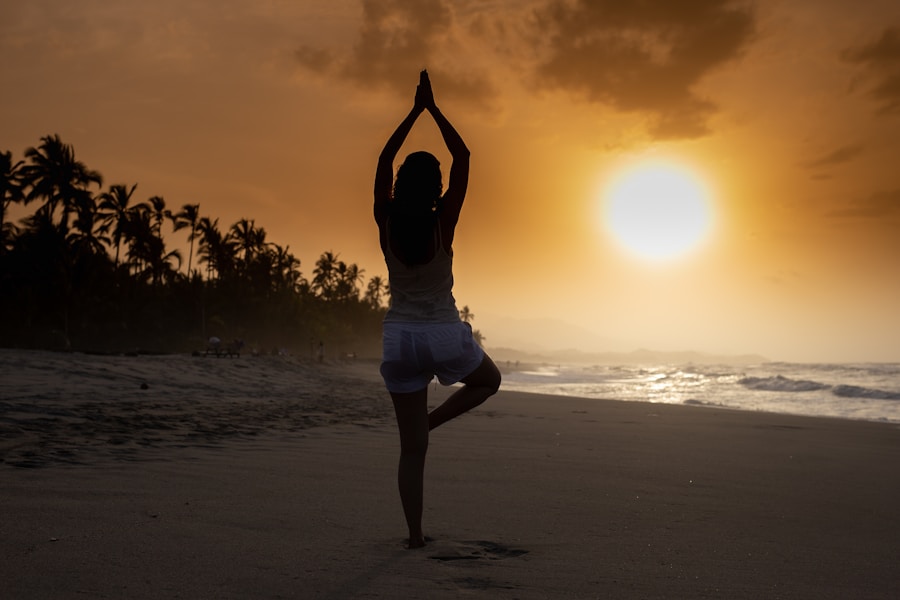Stress is a multifaceted phenomenon that affects individuals on both physiological and psychological levels. When faced with stressors, the body initiates a complex response known as the “fight or flight” reaction, which is governed by the autonomic nervous system. This response triggers the release of stress hormones such as cortisol and adrenaline, which prepare the body to confront or flee from perceived threats.
While this reaction can be beneficial in short bursts, chronic stress can lead to a myriad of health issues, including cardiovascular diseases, weakened immune function, and mental health disorders such as anxiety and depression. The psychological ramifications of stress are equally significant. Prolonged exposure to stress can lead to cognitive impairments, including difficulties with concentration, memory, and decision-making.
Individuals may experience heightened irritability, mood swings, and a general sense of overwhelm. The interplay between stress and mental health is particularly concerning; for instance, chronic stress can exacerbate existing mental health conditions or contribute to the development of new ones. Understanding this intricate relationship is crucial for developing effective strategies to mitigate stress and promote overall well-being.
Key Takeaways
- Stress can have a significant impact on both the body and mind, leading to physical and mental health issues.
- Yoga can be an effective tool for relieving stress, as it helps to calm the mind and relax the body.
- Incorporating breathing techniques into your daily routine can help to promote relaxation and reduce stress levels.
- Mindfulness and meditation practices can be beneficial for managing stress and promoting a sense of inner peace.
- Yoga poses and movements can help to release tension and promote a sense of physical and mental well-being.
- Creating a regular yoga practice can provide long-term stress relief and improve overall health and well-being.
Exploring the Benefits of Yoga for Stress Relief
Yoga has emerged as a powerful tool for managing stress, offering a holistic approach that integrates physical movement, breath control, and mindfulness.
Research has shown that regular yoga practice can significantly reduce levels of cortisol, the primary stress hormone, thereby alleviating the physiological symptoms associated with chronic stress.
Moreover, yoga promotes relaxation through its emphasis on deep breathing and mindful movement. Poses such as Child’s Pose and Legs-Up-the-Wall Pose are particularly effective in calming the nervous system and promoting a sense of tranquility. The rhythmic nature of breath in conjunction with physical postures helps to shift the body from a state of tension to one of relaxation.
This transition not only aids in stress relief but also enhances overall emotional resilience, allowing practitioners to navigate life’s challenges with greater ease.
Incorporating Breathing Techniques for Relaxation

Breathing techniques play a pivotal role in yoga and are essential for achieving relaxation and stress relief. One of the most widely practiced techniques is diaphragmatic breathing, which involves engaging the diaphragm fully to maximize oxygen intake. This method not only calms the mind but also activates the parasympathetic nervous system, which counteracts the stress response.
By focusing on slow, deep breaths, individuals can lower their heart rate and blood pressure, creating a physiological state conducive to relaxation. Another effective breathing technique is the 4-7-8 method, which involves inhaling for four counts, holding the breath for seven counts, and exhaling for eight counts. This practice not only helps to regulate breath but also encourages mindfulness by directing attention away from stressors and into the present moment.
Incorporating these breathing exercises into daily routines can serve as a powerful antidote to stress, providing individuals with tools to regain control over their physiological responses during challenging situations.
Practicing Mindfulness and Meditation for Stress Management
Mindfulness and meditation are integral components of yoga that enhance its effectiveness as a stress management tool. Mindfulness involves maintaining an open awareness of one’s thoughts, feelings, and bodily sensations without judgment. This practice encourages individuals to observe their experiences rather than react impulsively, fostering a sense of calm amidst chaos.
By cultivating mindfulness through yoga, practitioners can develop a greater understanding of their stress triggers and learn to respond with equanimity. Meditation complements mindfulness by providing structured techniques for quieting the mind. Practices such as guided imagery or loving-kindness meditation can help individuals cultivate compassion for themselves and others while reducing feelings of anxiety and stress.
Research indicates that regular meditation practice can lead to structural changes in the brain associated with improved emotional regulation and resilience. By integrating mindfulness and meditation into their yoga practice, individuals can create a robust framework for managing stress effectively.
Utilizing Yoga Poses and Movements to Release Tension
The physical aspect of yoga is instrumental in releasing tension stored within the body. Specific poses are designed to target areas where stress tends to accumulate, such as the shoulders, neck, and lower back.
Engaging in these movements allows practitioners to physically manifest their emotional release, creating a sense of liberation from both physical and mental burdens. Additionally, restorative yoga poses such as Supported Bridge Pose or Savasana (Corpse Pose) provide opportunities for deep relaxation. These poses encourage practitioners to surrender fully to gravity while supporting the body with props like bolsters or blankets.
This support allows for prolonged periods of stillness, enabling the body to enter a state of rest that is often elusive in our fast-paced lives. By incorporating these tension-releasing movements into their practice, individuals can experience profound relief from both physical discomfort and emotional strain.
Creating a Regular Yoga Practice for Long-Term Stress Relief

Establishing a consistent yoga practice is essential for reaping its long-term benefits in stress relief. A regular routine not only reinforces the physical benefits of yoga but also cultivates mental discipline and emotional resilience over time. Setting aside dedicated time each week for yoga practice—whether it be through attending classes or practicing at home—can create a sanctuary amidst life’s demands.
This commitment fosters a sense of stability and predictability that can be particularly comforting during stressful periods. To create an effective yoga routine for stress relief, individuals should consider incorporating a variety of practices that address both physical movement and mental stillness. A balanced session might include dynamic poses to energize the body followed by restorative poses that promote relaxation.
Additionally, integrating breathing exercises and mindfulness techniques throughout the practice can enhance its effectiveness in managing stress. By approaching yoga as a holistic practice rather than merely a physical workout, individuals can cultivate a deeper connection with themselves and develop lasting strategies for navigating life’s challenges with grace and resilience.
If you are interested in exploring the ancient practices of yoga and their benefits for stress relief, you may also enjoy reading about the crucial ecological roles of microbes and lower cryptogams in ecosystems. This article delves into the intricate relationships between these organisms and the environment, highlighting the importance of biodiversity for maintaining ecological balance. To learn more about this fascinating topic, check out The Crucial Ecological Roles of Microbes and Lower Cryptogams in Ecosystems.
FAQs
What is yoga?
Yoga is a physical, mental, and spiritual practice that originated in ancient India. It involves a combination of physical postures, breathing techniques, and meditation to promote overall health and well-being.
How does yoga help in relieving stress?
Yoga helps in relieving stress by promoting relaxation, reducing muscle tension, and calming the mind through deep breathing and meditation. It also helps in improving self-awareness and promoting a sense of inner peace and tranquility.
What are some yoga practices for stress relief?
Some yoga practices for stress relief include gentle yoga poses, deep breathing exercises (pranayama), meditation, and relaxation techniques such as yoga nidra. These practices help in reducing stress hormones and promoting a sense of calm and relaxation.
Is yoga suitable for everyone to relieve stress?
Yes, yoga is suitable for people of all ages and fitness levels to relieve stress. There are various styles and levels of yoga practices available, making it accessible for everyone. It is important to choose the right type of yoga practice that suits individual needs and physical abilities.
Are there any scientific studies supporting the effectiveness of yoga for stress relief?
Yes, there are numerous scientific studies that have demonstrated the effectiveness of yoga for stress relief. Research has shown that regular yoga practice can reduce perceived stress, anxiety, and depression, as well as improve overall mental well-being.






















+ There are no comments
Add yours